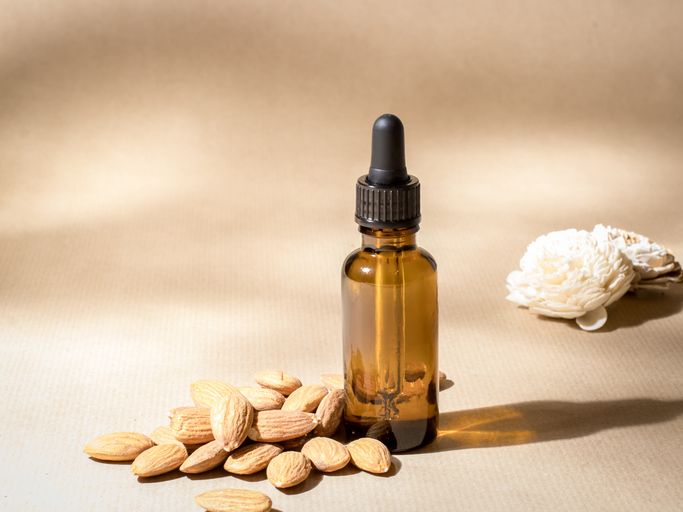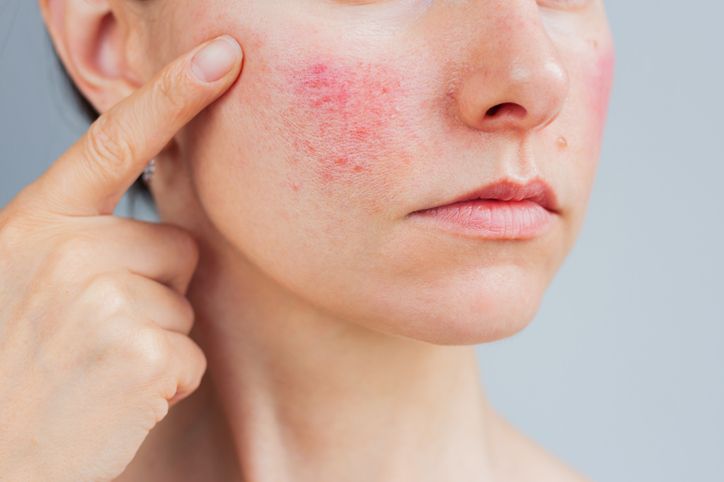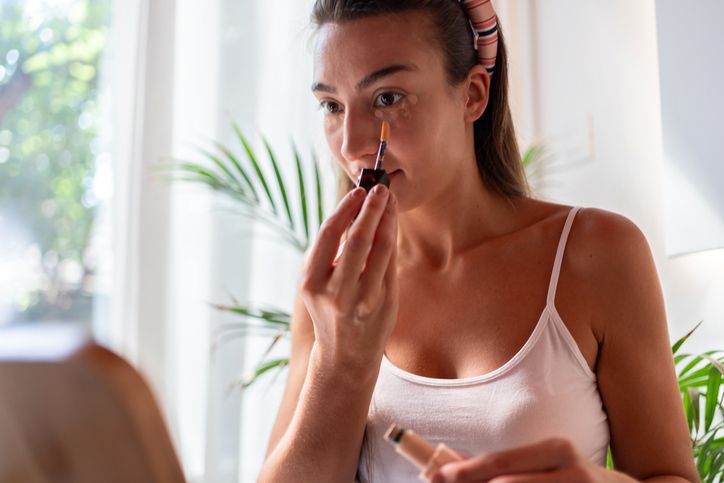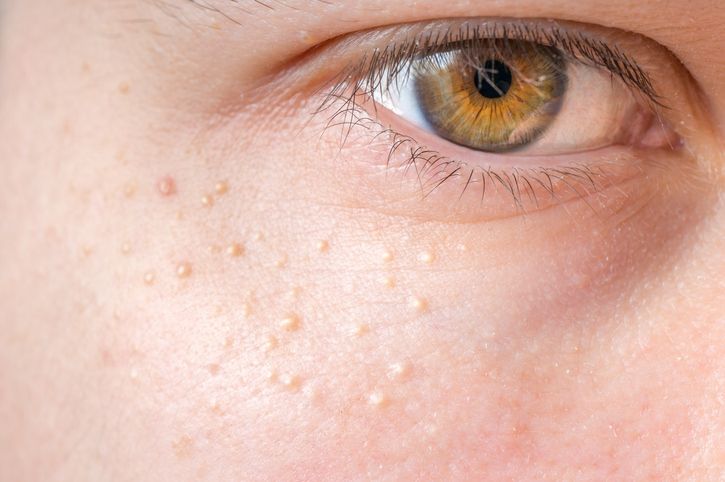- Home
- Trend
- Weight Loss Strategies
- Acne Tips
- Hair Health Information
- Blemish Removal Tips
- Acne Scar Removal Tips
- Muscle Building Techniques
- Intimate Care Tips
- Postpartum Intimate Care
- Eye Bags Wiki
- Tips for Face Slimming
- Secret of Permanent Hair Removal
- Breast Enlargement Tips
- Cure to Snoring
- Marionette Lines
- Skin-Tightening Secrets
The delicate skin around your eyes is often the first area to show signs of ageing. Fine lines, wrinkles, puffiness, and dark circles can leave you feeling tired and self-conscious. However, navigating the world of eye creams can be overwhelming. With endless options available, choosing the right one for your specific needs can feel like a daunting task. This guide will explore the different types of eye creams, focusing on retinol eye cream and its alternatives, to empower you to make an informed decision.
The Delicate Eye Area: Unveiling Its Vulnerabilities and Why It Needs Specialized Care
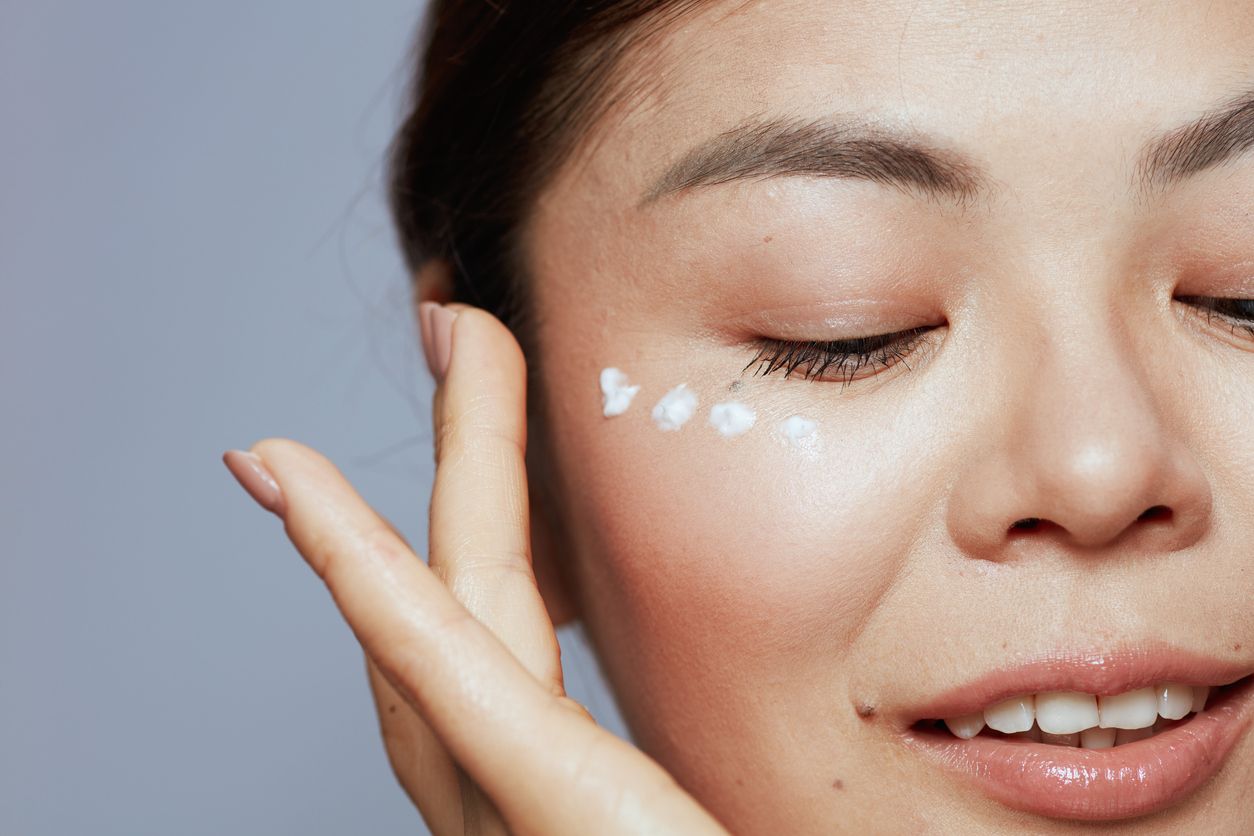
The under-eye region, often referred to as the "eye contour," is a testament to the body's intricate design. While undeniably beautiful, this area possesses a far more delicate structure compared to the rest of the facial skin. Imagine the stark contrast between a sheet of delicate papyrus and a sturdy leather-bound book. This significant difference in thickness makes the eye contour significantly more vulnerable to environmental stressors and the undeniable march of time.
Furthermore, unlike the rest of your face, the eye area lacks the presence of sebaceous glands. These glands are responsible for producing sebum, a natural oil that acts as a vital lubricant and hydrator for the skin. Without this built-in moisturising system, the eye contour becomes significantly more susceptible to dryness and dehydration. This lack of moisture can be likened to a parched desert landscape compared to the lush, well-hydrated fields of a fertile valley.
This unique combination of a thin structure and a predisposition to dryness makes the eye contour a prime target for the visible signs of ageing. The delicate under-eye area is often the first place where fine lines, wrinkles, and a loss of elasticity become noticeable, sometimes as early as your late 20s or early 30s. These lines and wrinkles form due to the breakdown of collagen and elastin, the very elements responsible for maintaining a youthful, firm appearance.
Different Types of Eye Creams: Finding the Perfect Fit

While all eye creams aim to enhance the appearance of the under-eye area, their specific functions and benefits can vary greatly. Here's a breakdown of the three most common types of eye creams:
1. Retinol Eye Cream: Championing Cellular Renewal for Age-Defiance
Benefits: The hero ingredient in this category is retinol, a derivative of Vitamin A scientifically recognized for its potent anti-aging properties. Retinol eye creams are specifically formulated to combat the visible signs of ageing, particularly targeting fine lines, wrinkles, and loss of elasticity. Retinol exerts its influence by promoting cellular turnover, a natural process where new skin cells replace older ones. This accelerated renewal results in a smoother, firmer appearance of the under-eye area. Additionally, retinol acts as a collagen stimulant, boosting the production of this vital protein that provides structural support to the skin. Imagine retinol as a cellular architect, actively rebuilding the framework for a more youthful appearance.
Key Ingredients: While retinol takes centre stage, some formulas incorporate additional allies to amplify its effects. Peptides are frequently included, acting synergistically with retinol. These messenger molecules communicate with skin cells, stimulating collagen production and further enhancing the overall benefits of the retinol.
2. Hydrating Eye Cream: Delivering Deep Moisture for a Refreshed Appearance
Benefits: As the name suggests, hydrating eye creams are specifically designed to address dryness, a prevalent concern for the delicate under-eye area. These creams are formulated with a blend of moisture-boosting ingredients such as hyaluronic acid, glycerin, and ceramides. Hyaluronic acid, a humectant, acts like a sponge, attracting and retaining vast amounts of water, effectively plumping the skin and diminishing the appearance of fine lines caused by dehydration. Think of it as a built-in reservoir of hydration, continuously replenishing moisture levels in the under-eye area.
Key Ingredients: Glycerin joins the effort, further enhancing hydration by attracting moisture from the air and drawing it into the skin. Ceramides play a critical role in strengthening the skin's barrier function, preventing precious moisture from escaping and keeping the under-eye area feeling supple and hydrated.
3. Brightening Eye Cream: Combating Dark Circles and Puffiness for a Radiant Glow
Benefits: If dark circles and puffiness are your primary under-eye concerns, a brightening eye cream can be your strategic weapon. These creams are formulated with a combination of ingredients like Vitamin C, caffeine, and kojic acid to address these specific issues. Vitamin C, a potent antioxidant, helps reduce hyperpigmentation, the underlying cause of dark circles. Think of it as a pigment-fading warrior, working to even out skin tone and diminish the appearance of those stubborn dark circles.
Key Ingredients: Caffeine enters the battle, acting as a vasoconstrictor that helps reduce blood vessel dilation, a contributing factor to puffiness. Imagine it as a decongestant for the under-eye area, minimising puffiness and creating a more refreshed appearance. Kojic acid, another ingredient sometimes found in brightening eye creams, can also help lighten dark circles by inhibiting the production of melanin, the pigment responsible for skin colour.
Benefits: If dark circles and puffiness are your primary under-eye concerns, a brightening eye cream can be your strategic weapon. These creams are formulated with a combination of ingredients like Vitamin C, caffeine, and kojic acid to address these specific issues. Vitamin C, a potent antioxidant, helps reduce hyperpigmentation, the underlying cause of dark circles. Think of it as a pigment-fading warrior, working to even out skin tone and diminish the appearance of those stubborn dark circles.
免費體驗
R6 Miracle Eye Rescue Treatment
1 Minute Self-Registration
Date should not be before minimal date
Decoding the Ingredients: Understanding Your Eye Cream
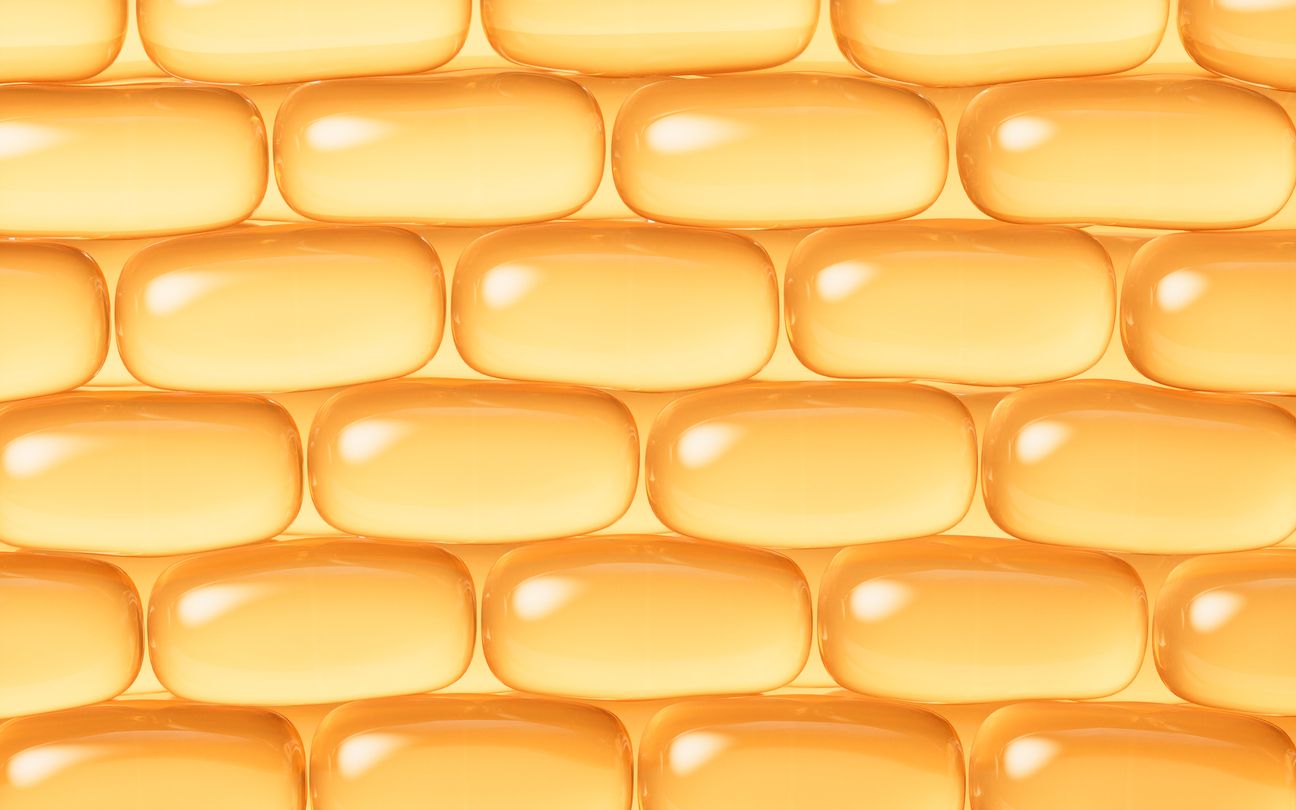
While brand names and marketing claims can be enticing, understanding the key ingredients in your eye cream empowers you to make informed choices. Here's a breakdown of some common ingredients you might encounter:
• Sodium Hyaluronate: This superstar humectant acts like a moisture magnet, attracting and retaining vast quantities of water in the delicate under-eye area. Think of it as a built-in reservoir, constantly replenishing hydration levels for a plump and youthful appearance.
• Sodium Hydroxide: This ingredient plays a critical role in balancing the pH level of your eye cream. A balanced pH ensures the formula is gentle enough for the sensitive under-eye area and functions optimally.
• Retinol Concentration: Understanding retinol concentration is crucial. Here's a simplified tip:
• Encapsulated Retinol: A good starting point for those new to retinol or with sensitive skin. Encapsulation refers to a technology that gradually releases retinol, minimising potential irritation.
• Pure Retinol: Offers a more potent dose for experienced retinol users targeting deeper wrinkles.
• Butylene Glycol & Caprylyl Glycol: These humectants work synergistically with sodium hyaluronate to further enhance hydration by drawing moisture from the air and into the skin.
• Pearl-Sized Amount: This refers to the recommended amount of eye cream for a single application. Using too much product can clog pores or irritate the delicate under-eye area.
• Disodium EDTA: This chelating agent helps prevent the growth of bacteria in your eye cream, ensuring its longevity and safety.
Tailoring Your Approach: Selecting the Ideal Eye Cream for Your Unique Needs

Choosing the perfect eye cream is akin to selecting the right tool for the job. Just as a carpenter wouldn't use a hammer for delicate woodwork, a one-size-fits-all approach to eye creams isn't optimal. To achieve the most impactful results, it's crucial to consider both your specific skin concerns and your overall skin type. Here's a breakdown to guide your selection:
Considering Skin Types: Selecting the Right Formula
Once you've identified your primary concerns, it's essential to consider your overall skin type. Here's a guide to help you navigate the selection process:
• Normal Skin: Congratulations! You have the most flexibility when it comes to eye creams. A retinol eye cream, hydrating cream, or brightening cream can all be potential options depending on your specific concerns.
• Oily Skin: Opt for a lightweight, oil-free formula to avoid clogging pores. A hydrating cream with hyaluronic acid will provide essential moisture without feeling heavy.
• Dry Skin: Choose a richer cream formulated with ingredients like shea butter or ceramides for long-lasting hydration. A hydrating or brightening cream may be a more suitable choice than a retinol cream, especially for very dry skin.
• Sensitive Skin: Proceed with caution when considering retinol. If you choose to incorporate a retinol eye cream, start with an extremely low concentration and introduce it gradually to minimise the risk of irritation. Alternatively, a gentle eye contour cream may be a more appropriate choice for your sensitive eye area
The key to achieving optimal results lies in understanding your unique skin and selecting an eye cream that addresses your specific concerns while complementing your overall skin type.
Unveiling the Miracle Eye Rescue Treatment: A Solution for Eye Bags and Beyond

The delicate under-eye area often betrays the signs of ageing first, revealing puffiness, dark circles, and wrinkles. If you're looking to combat these visible worries, the Miracle Eye Rescue Treatment from Perfect Medical might be the answer you've been seeking.
How Under-Eye Rejuvenation
This treatment combines three technologies to address various eye-area concerns in a single approach. Medical-grade radio frequency (RF) energy targets the deeper dermal layers, aiming to dissolve excess fat that contributes to under-eye puffiness.
Additionally, it may improve circulation, potentially promoting the removal of toxins and fluids that can exacerbate puffiness. Red and blue light therapy are incorporated to further address both puffiness and wrinkles. These specific wavelengths of light may stimulate circulation and encourage lymphatic drainage, potentially reducing puffiness. The light therapy may also work to stimulate collagen production, a protein that helps maintain skin firmness and elasticity.
Advantages Over Other Options
Compared to other methods like eye bag removal surgery, the Miracle Eye Rescue Treatment boasts several advantages. It is a non-invasive treatment, avoiding the use of needles or incisions, making it a less-invasive option.
Some users experience visible improvements relatively quickly after undergoing the Miracle Eye Rescue Treatment.
Considering a Consultation?
If you're interested in learning more about the Miracle Eye Rescue Treatment and whether it might be right for you, a consultation with a qualified professional is recommended. They can assess your specific concerns and determine if this treatment aligns with your goals for a brighter, smoother, and more youthful-looking under-eye area.
免費體驗
R6 Miracle Eye Rescue Treatment
1 Minute Self-Registration
Date should not be before minimal date
A Concluding Insight on How You Can Get Rid of Tired Eyes
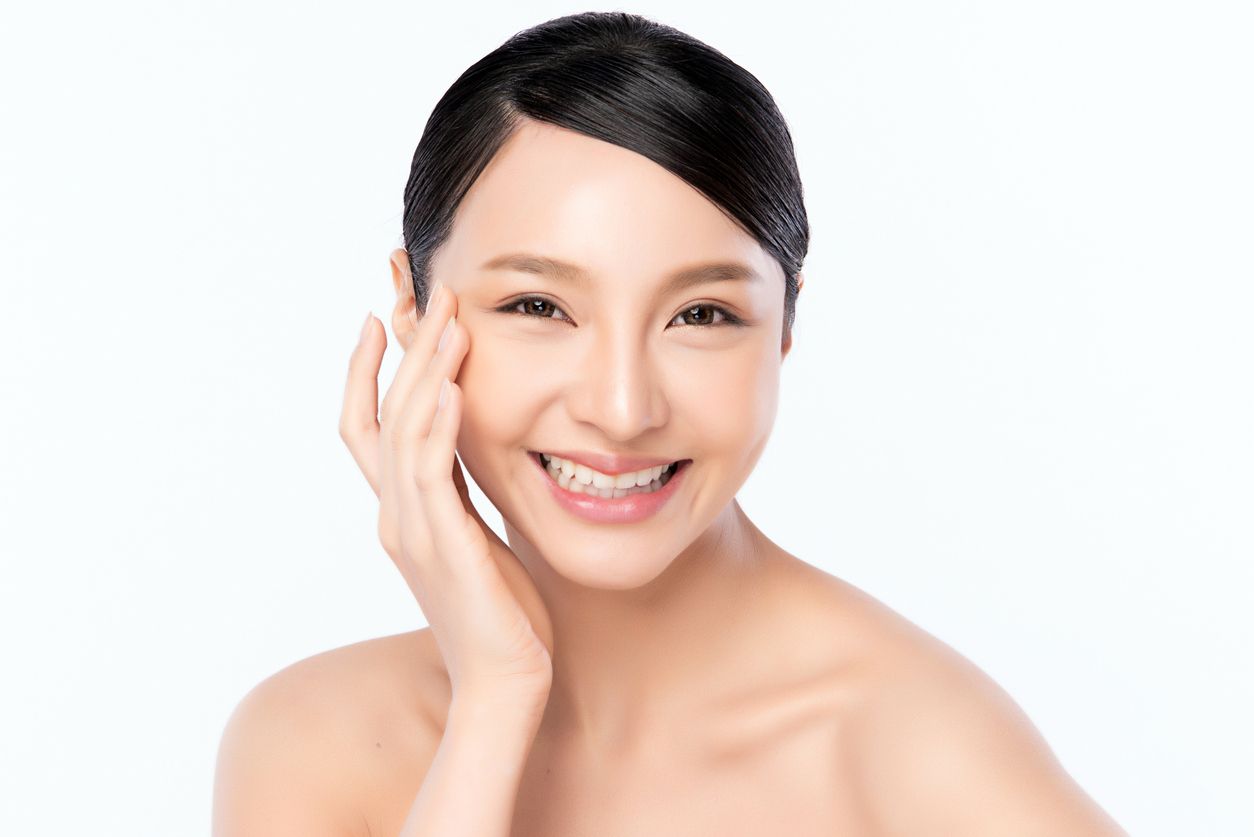
The delicate under-eye area demands a targeted approach to combat the visible signs of ageing. Retinol eye creams emerge as potent allies, wielding their scientifically proven properties to diminish wrinkles, dryness, and dark circles. However, for some individuals, achieving optimal results may necessitate a more comprehensive strategy.
A consistent skincare routine, incorporating a well-formulated retinol eye cream, lays a strong foundation. Yet, if persistent concerns like deep wrinkles or severe puffiness remain unaddressed, consider exploring advanced solutions. The Miracle Eye Rescue Treatment exemplifies such advancements, employing a multifaceted approach to target specific issues and potentially deliver a more pronounced outcome. Don't merely fight the signs of ageing; unlock the potential for transformative results.
免費體驗
R6 Miracle Eye Rescue Treatment
1 Minute Self-Registration
Date should not be before minimal date
FAQ

1. How can I reduce puffiness and tired eyes naturally?
Puffiness and tired eyes are common concerns that can be addressed naturally through various methods. Adequate sleep is crucial for allowing the eyes to rest and rejuvenate, reducing puffiness and minimising dark circles. Hydration plays a significant role as well, as dehydration can cause eye fatigue and puffiness. Applying cold compresses, such as chilled cucumber slices or tea bags, can help constrict blood vessels and reduce swelling around the eyes. Additionally, incorporating antioxidant-rich foods like berries, leafy greens, and citrus fruits into your diet can promote skin health and combat inflammation, contributing to brighter and less puffy eyes.
2. What are the benefits of using any natural vitamin for tired eyes and reducing puffiness?
Natural vitamins such as vitamin C, E, and K offer several benefits for tired eyes and puffiness. Vitamin C is renowned for its antioxidant properties, which help combat oxidative stress and promote collagen production, improving skin elasticity and reducing puffiness. Vitamin E is known for its moisturising and nourishing effects, aiding in hydrating the delicate skin around the eyes and reducing dryness. Vitamin K plays a role in blood clotting and can help minimise dark circles by reducing blood pooling under the eyes. Incorporating these vitamins into your skincare routine can contribute to healthier, rejuvenated eyes.
3. Should I use a broad spectrum sunscreen to protect my eyes from UV damage and maintain more elasticity?
Yes, using a broad spectrum sunscreen around the eyes is highly recommended to protect the skin from harmful UV rays. The skin around the eyes is thin and delicate, making it susceptible to UV damage, premature ageing, and loss of elasticity. A broad spectrum sunscreen with SPF 30 or higher helps shield the skin from both UVA and UVB rays, reducing the risk of sunburn, wrinkles, and sagging skin. Regular use of sunscreen can maintain skin elasticity and prevent photoaging, preserving a youthful appearance around the eyes.
4. What are the first signs of tired eyes, and how can I address them?
The first signs of tired eyes often include redness, puffiness, dark circles, and dryness. These symptoms can result from various factors such as lack of sleep, excessive screen time, allergies, or eye strain. To address tired eyes, it's essential to prioritise good eye hygiene by practising the 20-20-20 rule (taking a 20-second break every 20 minutes to look at something 20 feet away), using lubricating eye drops to combat dryness, and ensuring proper lighting and ergonomics when working on digital devices. Additionally, incorporating moisturising eye creams containing ingredients like hyaluronic acid and caffeine can help hydrate and depuff the eye area, reducing signs of fatigue.
5. Is stearyl alcohol safe to use in beauty products for reducing puffiness and improving skin elasticity?
Stearyl alcohol is a fatty alcohol commonly used in beauty products as an emollient and thickening agent. It is generally considered safe for cosmetic use and can contribute to improving skin texture and moisture retention. In products designed to reduce puffiness and improve skin elasticity, stearyl alcohol may help in providing a smooth and hydrated appearance. However, it's essential to note that individual sensitivities can vary, and some individuals may experience irritation or allergic reactions to certain ingredients, including stearyl alcohol. It's advisable to perform a patch test before using products containing this ingredient regularly and to discontinue use if any adverse reactions occur.





